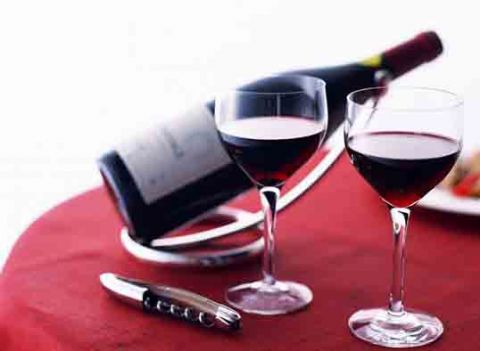How Wine Works with Chinese Food
Wine is an alcoholic beverage that is fermented with fresh grapes or grape juice. Usually divided into red wine and white wine. The former is made by impregnating and fermenting red grapes; the latter is made by fermenting grape juice.
Is it theoretically impossible to match wine with Chinese food? The answer is of course negative. In fact, as long as you master the principles of wine and cuisine, the complexity of wine and the richness of Chinese food can be described as a perfect match.

Wine and Western Food
The western world and the Chinese food world have several huge differences that are almost forgotten by diners. First of all, when you eat Western food, you always have a solitary plate in front of you. When the residual core is exhausted, the waiter will carefully take it away and replace it with another plate of lonely dishes. Second, you always have a group of goblets in front of you. When a glass of wine is finished, the sommelier will pour another wine into another glass.
Let's use the logic of diners to speculate on the value of the above two points in Western food. At least it gives us the opportunity to complete a low degree of difficulty, always face the only plate, drink the only wine in hand, wait until the plate is changed, the wine is also Follow the change. Thanks to the blessing of this mechanical dining aesthetic, Westerners have been able to find the perfect wine for each dish (with a total of no more than 300 tracks).
A piece of beef, mutton, or squid is often lying on the western food plate. Although the diners also have a knife, they are always inferior to the kitchen knife. Therefore, they need drinks to flush the food into the throat. Due to its rich taste and moderate alcohol content, it became the main wine on the western table.
Wine in China
The popularity of wine in China is relatively high, but it is mainly accepted as a healthy substitute and gift for liquor. Most Chinese people do not appreciate wine from their taste. Based on this void, the so-called wine catering in the past was more of a lack of basis for matching heads. Anyone who knows about the culture of wine knows that hundreds of thousands of wine producers worldwide, each bottle of wine, will show different tastes depending on the year, origin, breed, oak barrel, and brewer. It is also Chardonnay. In Burgundy, wines of the same year, which may have been produced on two lands separated by five meters, have a very different taste. Therefore, the combination of a wide range of concepts such as Riesling for Cantonese cuisine and Shih Sang Nam for Anhui cuisine is weak and vague. It is almost equivalent to consumer nonsense.
In the topic of Chinese cuisine with wine, what we need to do is to endorse hundreds of Chinese cuisine dishes and thousands of major wine styles, and summarize the practical conclusions. Westerners have used this practice for hundreds of years to complete this work, and eventually turned these experiences into a part of life. In the concept of flashy speculation, Chinese cuisine with wine is always unable to penetrate. ZEST will start with a feast of four major cuisines in Sichuan, Shandong, Guangdong and Huaiyang, select two dishes representative of each cuisine, and combine the wines selected by the experts to draw first-hand conclusions.
Before that, let's take a look at the most concise and practical skill book we have compiled for Chinese food and wine.
Chinese fools with wine
Fool's Gustler Theory: The Trick of Saltiness and Acidity
Why Fino Sherry with its clear taste can complement the appetizing kippers and bamboo shoots. The tacit understanding between salty hors d'oeuvres and high-acid aperitifs comes from the acidity of salt and wine. Salt can not only call the flavor of food colorful, but also can neutralize the acidity of grapes and release the fruit flavor of wine. Therefore, some heavy-salt and heavy-tasting dishes (especially appetizing cold dishes) in Sichuan, Hunan, and Shandong cuisine are suitable for wines with high acidity.
Recommended for high acidity wines: Italian Pinot Gris, German Riesling, Bordeaux white wine.
Fool's Taste Theory II: Spicy Dish Matching Refreshing Semi-Dry Wine
In the law of sweetness, sweetness can neutralize the pungency, making spicy hot and brisk. With the spicy and spicy dishes of Sichuan cuisine and Hunan cuisine, the refreshing white wine can both clear the mouth and dissolve spicy food, and it can add a soft and complex new feeling to the traditional spicy dishes. Spicy controls that are keen on oral fire can ignore this suggestion, but it is very practical for ordinary diners.
Refreshing semi-dry wines are recommended: late Riesling semi-dry white wines are picked in Germany, high-half dry white wines from Millerland in late Germany, high semi-dry red wines from Turin in Australia, semi-dry sparkling wines.
Blood Sugar Meter,Sugar Check Machine,Fasting Glucose Test,Glucose Monitoring Device
Wuxi BioHermes Bio & Medical Technology Co., Ltd. , https://www.biohermesglobal.com